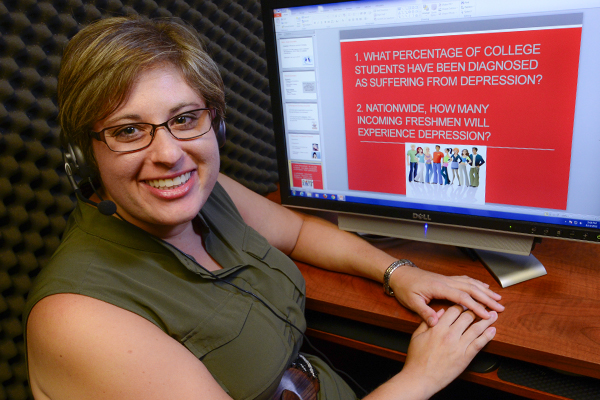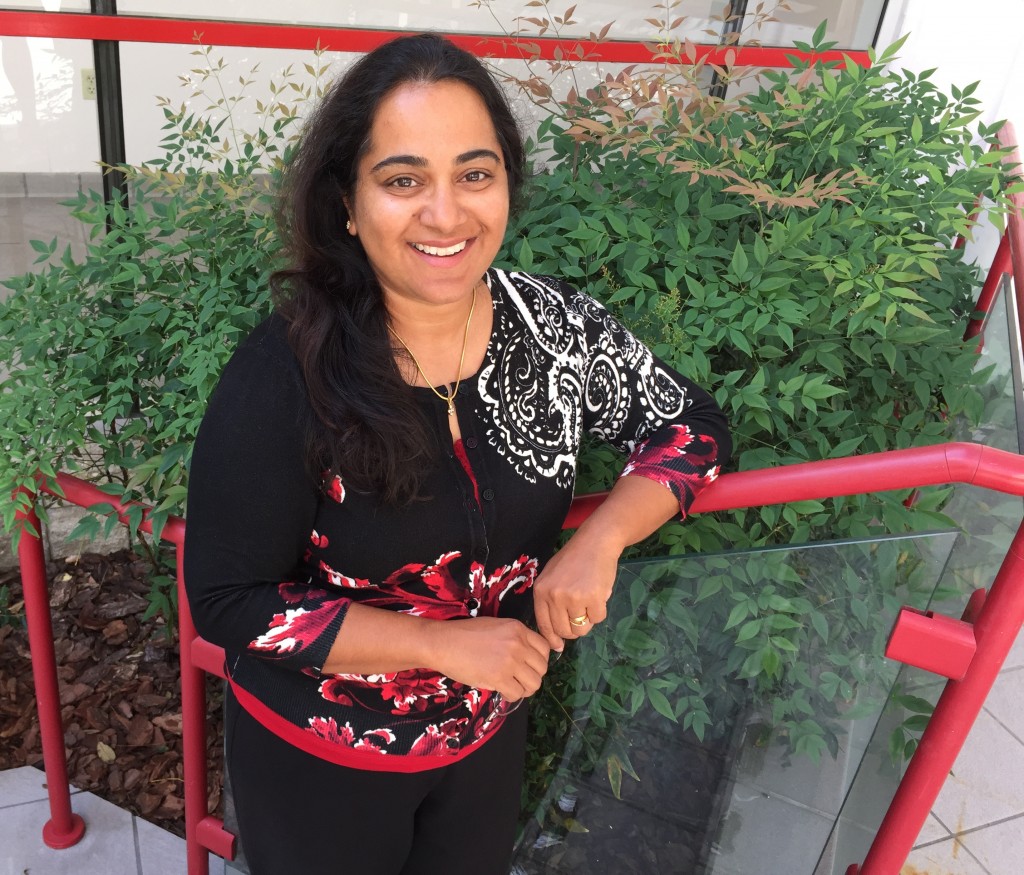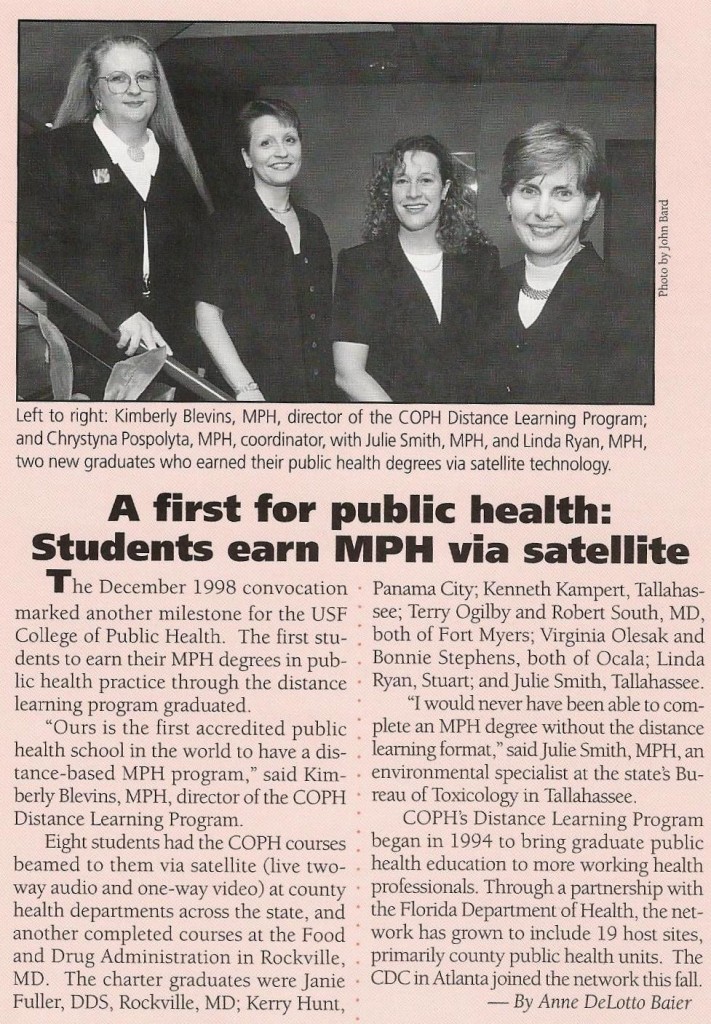College of Public Health a pioneer of online learning
First published on May 14, 2015 in observance of the COPH’s 30th anniversary celebration.
Long before the deluge of online learning became a given of modern education replete with a glut of overnight “universities,” USF’s College of Public Health launched a distance-learning presence that was formidable before online classes even existed.
From 1990-93, 45 state health department employees in Tallahassee earned master of public health degrees from USF via the old-fashioned method of distance learning. Every Tuesday, a COPH professor would journey to Tallahassee to teach a three-hour course that evening, said Dr. Charles Mahan, at that time state health officer, and later COPH dean.
“We gave them Tuesday afternoon off, and they gave up their evening,” Mahan explained. “One professor would come up for a month and do the whole core segment of epidemiology and biostatistics, and then somebody else would come up and do the whole core of community and family health.
“When people in practice throughout the state at the health departments saw what we were doing up there, they came to the college and said, ‘Please, do that for our staff.’ That’s when we began the distance-learning program.”
Technology offered a more efficient means by 1994, when COPH began beaming public health courses via satellite to 33 host sites at state and local health departments across Florida.
Answering a mandate
“USF College of Public Health had a very good partnership with the Florida Department of Health,” recalled Sandhya Srinivasan, COPH director of educational technology and assessment, “and through this partnership, we were able to deliver public health education while utilizing health department meeting space and satellite equipment that was already part of the Florida Department of Health satellite network. We were able to piggyback on that and beam our classes to busy health professionals.”
WUSF-TV had an uplink facility, Srinivasan explained, which enabled COPH to buy satellite time at the discounted educational rate. The telecasts were cabled to the uplink facility in Clearwater, then beamed to the satellite from there.
As part of the founding of the college a decade earlier, USF and COPH had a legislative mandate to train public health employees statewide, Srinivasan said. A needs assessment at the time signaled the need when it found that very few public health workers had had any formal public health training.
“They had come to public health through medicine or nursing or sociology, but they were not trained in public health,” she said, “and so the college had a huge challenge in front of it.”
Two evening courses were initiated to meet that challenge, she said. Each met once a week for three hours, and each had an on-site technical point person should the satellite or any link in the technology fail. Technical and material needs were communicated via phone or fax in those days before the advent of personal computers and e-mail.
Given those limitations, early growth was slow, but within a few years, the need for more courses and faster, easier means of delivery coincided well with the PC age. In 2001, Srinivasan said, technical advances and growing interest in the program sparked its rapid expansion.
“We started incrementally,” she said, “moving our classes from satellite to a blended online-and-satellite format.”
The Department of Education weighed in with a $3-million grant for instruction in technology. That IIT grant, as it was known (standing for Innovations in Technology and Training), enabled the college to hire instructional designers who brought in multi-media components that completed the transition from satellite-online hybrid to a fully online operation.
From online courses to online degrees
With all classes delivered entirely via Internet, geographic limitations were gone. Anyone, anywhere could take courses on the World Wide Web, and host sites were things of the past. It wouldn’t be long before the state’s first public health college conferred the state’s first fully online public health degrees.
According to figures supplied by David Hogeboom, statistical data analyst for COPH, the online degree program has conferred 383 MPH degrees in various concentrations since spring 2001. The total represents more than one-fifth of all MPH degrees and more than one-eighth of all degrees awarded by COPH in that timeframe. Srinivasan said nine students graduating on Dec. 13, 1998, from the Public Health Practice program were the first to earn their degrees via satellite.
“Today, in addition to public health practice, we have five other master’s concentrations online and 11 online graduate certificates,” Srinivasan said.
Unlike other classrooms, the virtual variety requires technical design specifically geared to disseminating educational materials. Accordingly, full-time instructional designers are a big part of the picture at COPH online.
“Our office consists of six full-time instructional designers and a graphics designer,” Srinivasan said. “The designers are assigned to particular courses and work hand-in-hand with faculty in preparing course materials and assessments. They are able to parse down a lesson to bare essentials and match the right technology that can deliver that content efficiently to the students.”

Today’s COPH online learning team. Back row, from left: Thomas Reilly, James Taylor, Andres Abril, Carlos Montoya, Samantha Lopez. Front row, from left: Ana Vizcaino, Jung Lim, Sandhya Srinivasan, Trudian Trail-Constant.
Srinivasan said one of the concerns the designers address is interaction.
“It is less than ideal to listen to a talking head for three hours, so we use different types of interactive technologies that enable and even encourage student interaction,” she said.
Much of that interaction involves typed responses, she said, but even that is rapidly changing.
“As part of Canvas, the learning management system at USF, we now have access to an interactive virtual tool called Blackboard Collaborate. Students and instructor log in at a given time and date, and the tools within that virtual classroom allow for interaction. Students and faculty are able to interact via audio, video and whiteboard tools to do everything they could do in a traditional classroom.”

Alison Oberne, MA, MPH, CPH, an instructor in the USF College of Public Health, narrates a lecture for an undergraduate public health course using the recording space in COPH used for recording content for the lectures and modules of most of the college’s online degree programs.
It doesn’t take an instructional designer to appreciate the brightness of COPH’s online future.
When the college launched its online master’s program, Mahan said, deans at other colleges of public health told him it would never work. In fact, he said, deans from the older schools of public health at revered institutions like Harvard and Johns Hopkins flat-out swore they would never do it.
“Now, of course, they all do it,” he said. “Absolutely, we were the first to do it. We were a couple of years ahead of everybody else in offering the full MPH by distance.”
“The tools from the beginning to now have undergone tremendous change,” Srinivasan said. “We are committed to remaining on the cutting edge, so the future of our program will be wherever virtual classroom technology will allow us to go.”
Story by David Brothers, College of Public Health.





